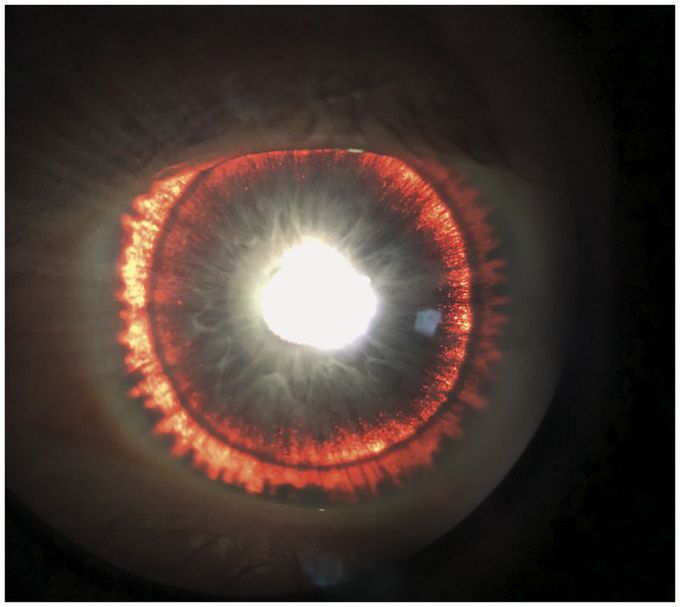


Iris Transillumination Defects in Pigment Dispersion Syndrome
A 44-year-old man with a family history of glaucoma presented to the ophthalmology clinic to reestablish care after relocating. He had previously started using timolol, brimonidine, and brinzolamide, which had been prescribed because of increased intraocular pressure. The measured pressure was 21 mm Hg (normal range, 12 to 20) in each eye, and his visual acuity was 20/25 in each eye. Examination revealed circumferential spoke-like iris transillumination defects in both eyes. Gonioscopy of the anterior chamber revealed an open, yet heavily pigmented, iridocorneal angle and a cup-to-disk ratio of 0.4 in the right eye and 0.6 in the left eye. A diagnosis of pigment dispersion syndrome was made. Posterior bowing of the iris causes chafing of zonular fibers of the lens and release of pigment. This pigment accumulates in the trabecular meshwork of the eye and may prevent aqueous humor drainage, thereby leading to increases in intraocular pressure and subsequent optic nerve damage known as pigmentary glaucoma. The patient underwent selective laser trabeculoplasty but continued to use pressure-lowering eyedrops to control his intraocular pressure.

